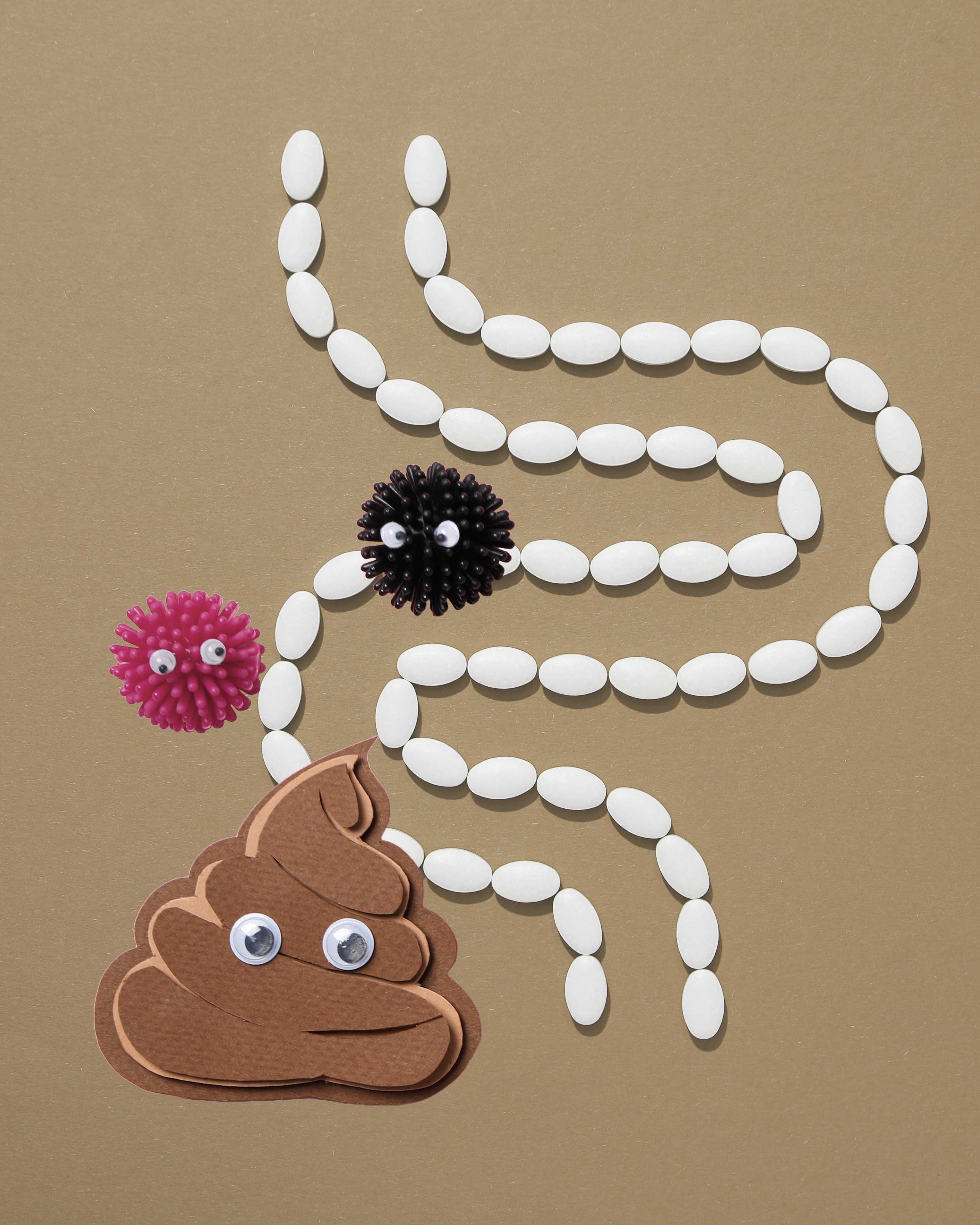When undergoing a candida detox program, many individuals experience what is known as candida die-off symptoms. This process occurs when the overgrowth of candida cells in the body is being reduced, causing the release of toxins. Understanding these symptoms can help individuals navigate the detox process with confidence and ease.
Key Takeaways:
- Candida die-off symptoms occur during a candida detox program.
- These symptoms are a result of the reduction of candida overgrowth in the body.
- Knowing the symptoms can help individuals manage the detox process effectively.
- Common candida die-off symptoms include headaches, fatigue, digestive issues, mood swings, and brain fog.
- Proper management techniques can alleviate discomfort during this period.
Understanding Candida Overgrowth
Candida overgrowth is a common condition caused by an imbalance in gut microbiota. When the delicate balance of good and bad bacteria in the gut is disrupted, candida, a type of yeast, can proliferate and cause a variety of symptoms.
Several factors can contribute to candida overgrowth, including:
- High sugar and refined carbohydrate consumption
- Prolonged use of antibiotics
- Weakened immune system
- Hormonal imbalances
- Chronic stress
When candida overgrowth occurs, it can manifest as a range of symptoms, both digestive and systemic. Common symptoms include:
- Recurrent yeast infections
- Fatigue and low energy levels
- Brain fog and difficulty concentrating
- Digestive issues like bloating, gas, and diarrhea
- Food cravings, especially for sugary foods
Understanding the causes and symptoms of candida overgrowth is crucial for effectively addressing this condition. In the next sections, we will explore candida die-off symptoms, how to manage them, and when to seek medical help.

What Causes Candida Die-Off
In the process of candida die-off, there are several factors that can trigger the elimination of Candida cells in the body. Understanding these causes can help individuals navigate the detox process more effectively.
- Antifungal Treatments: The use of antifungal medications or natural remedies can cause a rapid and significant reduction in the Candida population. As the antifungals target and destroy the yeast cells, the dying cells release toxins that can trigger die-off symptoms.
- Dietary Changes: Making dietary changes that include reducing or eliminating sugar and processed foods can create an inhospitable environment for Candida. When the yeast cells can no longer thrive, they begin to die off, leading to die-off symptoms.
- Supplements: Certain supplements, such as probiotics or herbal antifungals, can help rebalance the gut microbiota and inhibit the growth of Candida. As these supplements take effect, they can cause the Candida cells to die off, resulting in die-off symptoms. See Gutable's candida-targeting supplements here.
It's important to note that while these factors can trigger Candida die-off, the intensity and duration of symptoms may vary from person to person. Some individuals may experience mild symptoms that pass quickly, while others may have more pronounced symptoms that last longer.
Common Candida Die-Off Symptoms
When undergoing a candida detox, it is not uncommon to experience various symptoms as the candida cells begin to die off. These symptoms, known as candida die-off symptoms, can vary from person to person but often include a combination of physical and emotional manifestations.
One of the most commonly reported symptoms during candida die-off is fatigue. Many individuals may feel an increased sense of tiredness and lack of energy as the body works to eliminate the excess candida. Headaches and migraines are also frequently experienced, which can be attributed to the release of toxins during the detox process.
Other physical symptoms may include digestive issues such as bloating, constipation, or diarrhea. These symptoms arise due to the disruption of the gut microbiota balance caused by candida overgrowth. Additionally, individuals may experience skin rashes, itching, or acne breakouts as the body eliminates toxins through the skin.
Emotional symptoms during candida die-off are also prevalent. Mood swings, irritability, anxiety, and depression can occur as the body adjusts to the elimination of candida toxins. Some individuals may also experience brain fog or difficulty concentrating, affecting their cognitive abilities temporarily.
Managing Candida Die-Off Symptoms
While candida die-off symptoms can be unpleasant, there are strategies to manage them effectively. Staying hydrated is essential to support the body's detoxification process and flush out toxins. Eating a balanced diet rich in whole foods, while avoiding processed sugars and refined carbohydrates, can help minimize symptoms.
Getting enough rest and sleep is crucial during the detox process, as the body requires time to repair and regenerate. Engaging in stress-reducing activities such as yoga, meditation, or deep breathing exercises can also aid in symptom management.
Additionally, incorporating natural remedies that promote detoxification, such as milk thistle or activated charcoal, may assist in alleviating candida die-off symptoms.
By implementing these strategies, individuals can navigate through candida die-off symptoms with greater ease, ultimately supporting their overall well-being during the detoxification process.
Managing Candida Die-Off Symptoms

When experiencing candida die-off, it's essential to effectively manage the symptoms to ensure a smooth and comfortable detox process. By adopting certain strategies, individuals can alleviate discomfort and support their bodies during this phase.
Staying hydrated is paramount during candida die-off. Drinking an adequate amount of water helps flush out toxins and promotes overall well-being. Additionally, incorporating herbal teas and natural detoxifying beverages can aid in the detoxification process.
Maintaining a balanced diet is crucial for managing candida die-off symptoms. Focus on consuming nutrient-dense foods that support the body's healing and recovery. Include plenty of fresh fruits, vegetables, lean proteins, and healthy fats in your meals. Avoid processed foods, refined sugars, and alcohol, as they can exacerbate symptoms.
Getting enough rest is vital to support your body's natural healing process. During candida die-off, the body undergoes significant detoxification, which can be physically and emotionally taxing. Aim for at least 7-8 hours of quality sleep each night and listen to your body's signals for additional rest and relaxation.
Incorporating natural remedies can provide relief from candida die-off symptoms. Probiotics and digestive enzymes can help restore gut health, while herbal supplements like garlic, oregano oil, and grapefruit seed extract possess antifungal properties that aid in eliminating candida overgrowth.
It's important to remember that managing candida die-off symptoms is a personalized process. What works for one person may not work for another, so it's crucial to listen to your body, observe how it responds to different approaches, and make adjustments accordingly. Consulting with a healthcare professional or a qualified naturopathic practitioner can provide invaluable guidance tailored to your specific needs.
Length and Intensity of Candida Die-Off
One of the key aspects of candida die-off is understanding its duration and intensity. It is important to note that the length and intensity of candida die-off symptoms can vary from person to person. This is because each individual's body and system may respond differently to the detoxification process.
Typically, the length of candida die-off can range from a few days to a couple of weeks. During this time, the body is actively eliminating the excess candida cells, which can cause temporary discomfort.
The intensity of candida die-off symptoms can also differ among individuals. Some people may experience mild symptoms that are easily manageable, while others may have more intense reactions. These reactions can manifest as physical symptoms like headaches, fatigue, or digestive issues, as well as emotional symptoms such as mood swings or brain fog.
It is important to remember that experiencing candida die-off symptoms is a positive sign that the body is responding to the treatment and detoxification process. However, if the symptoms become severe or prolonged, it is advisable to seek medical guidance to ensure proper management and support.
When to Seek Medical Help
While candida die-off symptoms are generally a sign that the body is eliminating excess yeast, there are instances where seeking medical help is necessary. It's important to be aware of the severity and duration of your symptoms to determine when professional intervention may be needed.
If you experience severe symptoms such as severe abdominal pain, persistent vomiting, or difficulty breathing, it is crucial to seek immediate medical attention. These could be signs of a more serious underlying condition that requires immediate evaluation and treatment.
Additionally, if your candida die-off symptoms do not improve or worsen over time, despite following appropriate management strategies, it is advisable to consult a healthcare professional. They can assess your condition, conduct further investigations if needed, and provide tailored guidance to help alleviate your symptoms.
Prolonged or severe mental health symptoms, such as severe depression or thoughts of self-harm, should also prompt you to reach out to a healthcare provider. Candida die-off can have an impact on your emotional well-being, and seeking professional help can provide essential support during this process.
Remember, every individual is unique, and the severity and duration of candida die-off symptoms can vary. Trust your instincts and consult a healthcare professional if you have any concerns or doubts about your symptoms. They are best equipped to provide personalized advice and ensure your well-being throughout the candida die-off process.

Preparing for Candida Diet and Detox Program
Embarking on a candida diet and detox program requires careful preparation to ensure a successful journey towards improved health. By following these practical tips, you can create a solid foundation to support your body during the detox process.
First and foremost, gradually reducing your sugar intake is essential. Candida feeds on sugar, so minimizing your consumption helps starve the overgrowth. Replace sugary treats with healthier alternatives like fresh fruits or stevia. This step will help create an unfavorable environment for candida.
Additionally, planning your meals is crucial for a smooth transition to the candida diet. Stock your pantry with Candida-friendly foods such as vegetables, lean proteins, and whole grains. Experiment with new recipes to keep your meals interesting and satisfying. By being prepared and organized, you'll be more likely to stick to the diet and achieve your wellness goals.
Finally, don't underestimate the role of stress reduction techniques in supporting your body during the detox program. High stress levels can weaken your immune system and hinder your progress. Incorporate activities like yoga, meditation, or regular exercise into your daily routine to promote relaxation and overall well-being.
Navigating Candida Die-Off Symptoms
Embarking on a candida detox program can be a transformative journey towards reclaiming health and vitality. However, it's essential to be prepared for candida die-off symptoms, which can arise as the overgrowth of candida cells in the body is being reduced. By understanding these symptoms and their underlying causes, individuals can navigate the detox process with confidence and ease. With Gutable®'s support and resources, individuals can embrace the healing journey and emerge stronger, healthier, and more empowered than ever before.
Frequently Asked Questions
What are some common candida die-off symptoms?
Common candida die-off symptoms include fatigue, headaches, muscle aches, joint pain, digestive disturbances, skin rashes, and flu-like symptoms. These symptoms typically occur as a result of the release of toxins when the overgrowth of candida cells is being reduced.
How long do candida die-off symptoms last?
The duration of candida die-off symptoms can vary depending on factors such as the severity of the candida overgrowth, individual health status, and the effectiveness of the detox program. Symptoms may last anywhere from a few days to a few weeks as the body eliminates toxins and adjusts to the changes.
Are there ways to alleviate candida die-off symptoms?
Yes, there are several strategies to alleviate candida die-off symptoms and support the detox process. Drinking plenty of water, getting adequate rest, practicing stress-reduction techniques, and incorporating gentle detoxifying foods and supplements into your diet can help alleviate symptoms and support the body's natural detoxification processes.
Should I continue with the candida detox program if I experience die-off symptoms?
If you experience candida die-off symptoms during a detox program, it's essential to listen to your body and adjust your approach accordingly. While some degree of discomfort may be expected as toxins are eliminated, severe or prolonged symptoms may indicate that the detox program is too aggressive. In such cases, consider slowing down the detox process, consulting with a healthcare professional, or exploring alternative detox strategies.

Gutable's Candida Support Tonic
Ready to combat candida overgrowth and promote a healthier gut naturally? Discover Gutable's Candida Support Tonic—a potent elixir meticulously crafted to address candidiasis symptoms and restore gut balance. Harnessing the synergy of premium ingredients like oregano oil, gentian root, and black walnut hull, our tonic offers comprehensive support for your gut health journey.

































